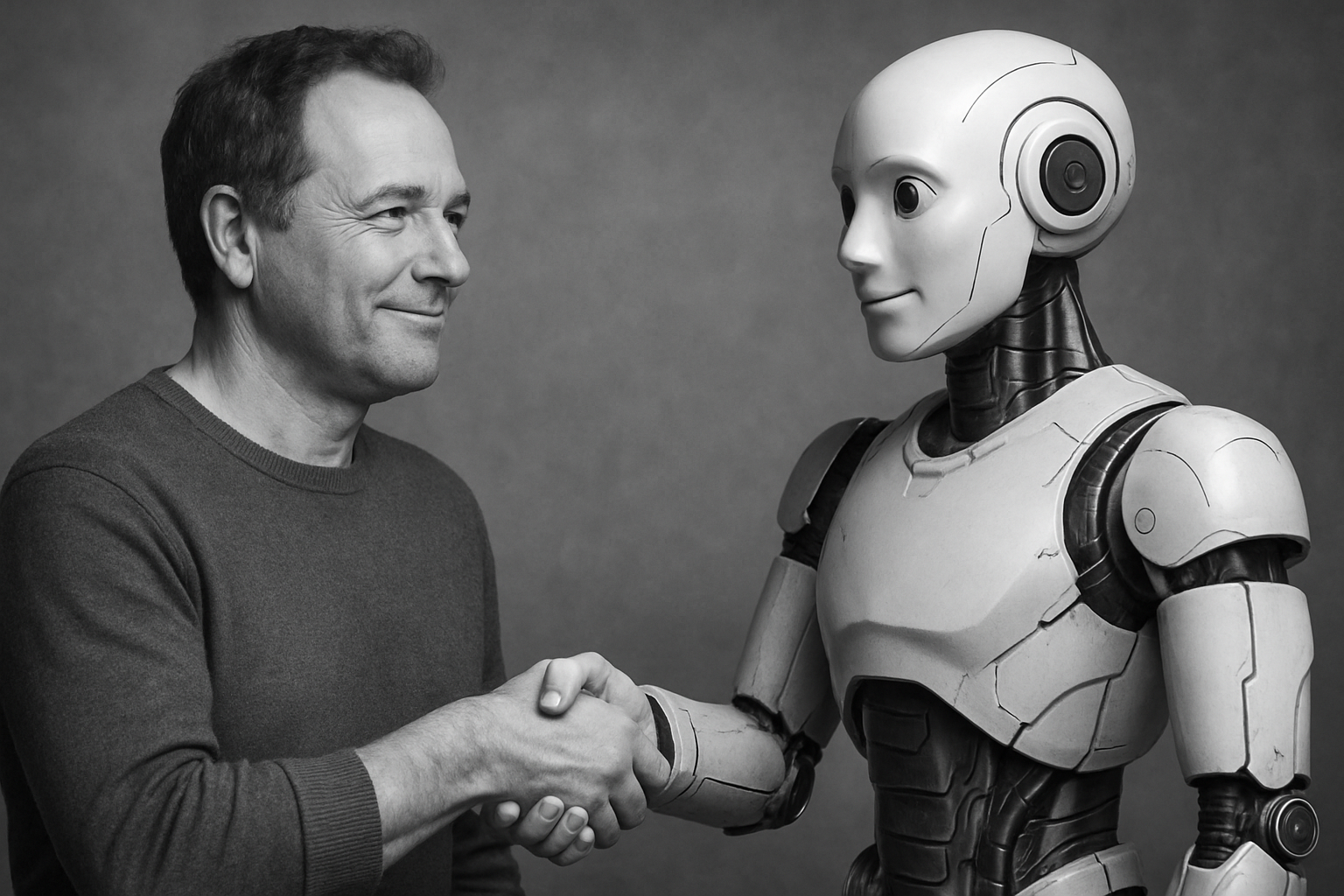This post disscusses a real agentic design practice. Agentic design, bridging human agency and artificial intelligence, requires careful translation between human mental models and algorithmic processes. This challenge intensifies across diverse interfaces, from voice interactions to distributed smart home ecosystems. Design best practices and Value-driven design offer crucial insights, emphasizing human goals, iterative problem-solving, and understanding different user needs.
A real Agentic design practice, what I call Human-Delegate Interface or HDI, prioritizes observability, adjustability, and "satisficing", presenting manageable options to users while progressively revealing complexity. It also addresses distributed agency across devices and modalities, requiring new approaches to consistency and continuity. Value-Driven Design (VDD), on the other hand, provides a framework for agentic interface development, focusing on measurable stakeholder outcomes and aligning system decisions with cross organizational objectives.
Beyond the Algorithm: Design as Translation
Herbert Simon’s conception of design as the bridge between existing and preferred situations finds profound relevance in our agentic age. The challenge is no longer simply creating intelligent systems, but designing the touchpoints where human agency meets artificial capability. (Herbert Simon’s term the “Science of the Artificial” takes on a new and welcomed double meaning.)
Whether a marketing manager orchestrating a campaign through conversational interfaces, a developer debugging agent behavior through visual dashboards, or a consumer delegating household tasks to ambient computing, each interaction requires careful translation between human mental models and algorithmic processes.
This translation challenge intensifies across the diverse landscape of agentic interfaces. Unlike traditional software with its familiar windows and buttons, agentic design must accommodate everything from voice interactions in smart speakers to gesture-based controls in both augmented reality and consumer appliances, from simple mobile apps to distributed interfaces spanning multiple devices throughout a smart home ecosystem. This becomes the new ecology of the user interface. No longer a GUI (Graphical User Interface), this new agentic design is more a Human-Delegate Interface or HDI.
The Designerly Way of Knowing Agents
Value Driven Design as developed by Keen Design, as well as Nigel Cross's concept of “designerly ways of knowing,” offer crucial insights into approaching these novel interface challenges.
Critical design thinking emphasizes solution-focused reasoning, working backwards from desired outcomes rather than forward from technical capabilities, features, and/or functions. In agentic design, this means starting with human goals and business value (what people actually want to achieve) rather than showcasing what the AI can technically accomplish.
Consider the fundamental design challenge of agency handoff: when should a human maintain direct control, when should they delegate to an agent, and how should they monitor and intervene in automated processes?
Cross's emphasis on constructive, iterative problem-solving suggests that these boundaries cannot be predetermined but must emerge through careful observation of use patterns, rapid prototyping of interaction models, and continuous refinement based on real-world feedback.
The designerly approach also recognizes that different user constituencies require fundamentally different interface paradigms. Developers need transparency and controllability; detailed logs, clear state visualization, and granular override capabilities. Less technical creators need inspiration and flow; interfaces that amplify rather than interrupt their creative process. The experienced user needs oversight and optimization; dashboards that provide strategic insight without overwhelming operational detail. Consumers need simplicity and reliability; interfaces that fade into the background, surfacing only when human judgment is truly required.
Knowing these factors is not a universal matter as human behavior changes and varies from context to context and must be designed for each new solution.
Reflection-in-Action for Dynamic Interfaces
Donald Schön’s notion of “reflection-in-action” becomes particularly relevant when designing for systems that learn and adapt. Unlike static interfaces, agentic systems evolve their capabilities and behaviors over time. This creates a unique design challenge: how do you design for a moving target? While there are many design problems, like a simple mobile app or blog design that require little reflection and reframing, these are more dynamic design issues that are far from being solved like the more static GUIs.
Schön's framework suggests that effective agentic design must incorporate a design process with careful evaluation and challenging assumptions to ensure the most effective and competitive designs emerge.
Take for example our current chatbot design, which is impoverished at best, and in desperate need of reframing (and shows little sign of it). These designs are one of the core blockers in AI utilization.
The developmental and synthetic biologist, Michael Levine, once observed in his work on bioelectric interfaces: “Like with any intelligence system, if you don’t see its intelligence, it’s a two-way IQ test. The problem could be the system or it might be you.”
Levine was referring to the shortcomings of scientists to use the correct prompts to have cells respond appropriately. On the other hand, it also points out the failure of current chatbot design in that the system’s intelligence is hidden from the user by technicians incapable of visualizing it.
If designed properly, rather than coming up with some rote chatbot solution and shoving the heavy lifting onto a naïve user who has scant idea what or how to unleash the power at their disposal. Instead through reflection in action, design can create more effective and dynamic design solutions.
This approach creates new UI paradigms and opportunities that do not currently exist. It also turns the negatives of AI: hallucinations, inaccuracies, and other faults into strengths by designing with them and not against them as current designs do.
Moreover, users need to understand not just how to operate and create their agents; they also need to understand what their agents are doing, and why they're doing it and how their behavior might change based on new information or evolving contexts. This requires designing not just feedback loops that make agent reasoning visible and comprehensible, allowing users to develop intuitive mental models of their artificial collaborators; but it also requires the mirror image: feedback loops that make user reasoning visible and comprehensible, allowing agents to develop their own intuitive algorithms (AI-mental models if you will) for their end-user collaborators.
Lastly, because agentic behaviors emerge through use rather than being fully specified upfront, designers must build systems that can be observed, interpreted, and refined in real-time, including designs that avoid dead-ends and create new observable pathways. This suggests interface architectures that prioritize observability and adjustability over predetermined optimization.
Satisficing in an Age of Infinite Possibility
Herbert Simon's concept of “satisficing” (seeking solutions that are good enough rather than optimal) offers a counterintuitive but essential principle for agentic design. While AI systems can theoretically consider vast solution spaces, human interfaces must help users navigate these possibilities without becoming overwhelmed; because at the end of the day, the human brain is limited by available information, cognitive capabilities, and time, what Simon called “bounded rationality.”
Effective agentic design embraces satisficing at the interface level, presenting manageable sets of options rather than exposing the full complexity of AI capabilities. It’s also about teaching both how the machine should interact with the human while instructing the user how to interact with the machine.
This isn't about limiting functionality but about progressive disclosure; revealing complexity only as users develop expertise and express specific needs. But this progressive disclosure, unlike any before it, happens across an ecology of devices and modalities. Rather than trying to boil an ocean of possibilities, sufficing means creating a narrative across the agentic ecology which is still the most dependable and proven way agents can reach their full potential.
We will probably see, regardless of the company that does it, an emerging iPhone of AI which tosses out all the technical gobbledy gook and just offers those minimal and extremely valuable pieces that will grow and eat the best ideas of the AI tools around it. That’s when you will know the designer’s hand has been involved.
Designing for Distributed Agency
As mentioned above, the most distinctive challenge in agentic design is accommodating distributed interfaces across multiple devices, contexts, and interaction modalities. A single conversation with an AI assistant might first begin on a smartphone, second continue through a smart speaker, third move to a connected door, fifth hop over to a connected refrigerator before concluding on a laptop.
All this happens with the agent maintaining context and capability across all touchpoints.
This distributed nature demands new approaches to consistency and continuity. Traditional interface design could rely on screen real estate and persistent visual elements. Agentic design must work with ephemeral voice interactions, ambient environmental cues, fractured attention, and contextual notifications that adapt to the user's current situation and available devices. For these cues, new design paradigms are needed.
Facilitating new paradigms: Value-Driven Design
The Value-Driven Design methodology provides a crucial framework for agentic interface development by shifting focus from feature delivery to measurable stakeholder outcomes.
Rather than beginning with technical capabilities or predetermined features, VDD establishes hierarchical value chains connecting organizational objectives to individual agent elements. In agentic contexts, this approach becomes essential because autonomous systems must pursue value creation without constant human oversight.
VDD also creates explicit linkages between business OKRs, customer needs, user goals, and specific design assets, ensuring every system decision traces back to measurable value delivery. In Value Driven Design, there are multiple layers of values from business to customer to user.
For agentic systems, VDD further means designing systems that spawn multiple users, multiple agents, and serving multiple values from multiple businesses. This systems thinking approach enables designers to design systems that define value parameters, monitor autonomous value creation, and intervene when agent actions diverge from intended outcomes, etc.
The iterative feedback loops central to value-driven methodology become critical for systems that learn and adapt, requiring interfaces that surface not just what agents accomplished but how they interpreted and pursued value objectives across different contexts and stakeholder needs. This systematic approach to value alignment through design ensures agentic systems remain purposeful rather than merely technically sophisticated.
The Human-Centered Future of Agency
As we stand at the threshold of widespread agentic computing, the principles established by design thinking pioneers provide both foundation and compass. Cross’s solution-focused design approach, Schön’s reflective practice, and Simon’s satisficing principle offer timeless wisdom for navigating unprecedented design challenges. Value Driven Design provides a design method for incorporating complex systems of value as the drivers behind the orchestration of agents in service to multiple users.
The future of agentic design lies not in maximizing AI capabilities but in thoughtfully mediating the relationship between human intention and artificial capability. Success will be measured not by technological sophistication but by the seamless integration of artificial agents into the natural flow of human work, creativity, and daily life.
This is design’s next frontier: creating interfaces that make artificial intelligence not just powerful, but genuinely useful in the lived experience of diverse human communities. The techniques may be timeless, but their application to agentic systems opens entirely new territories for thoughtful, human-centered design practice.
For Further Reading
Foundational Design Theory
Simon, H. A. (1996). The Sciences of the Artificial (3rd ed.). MIT Press.
• The seminal work on design as a science, introducing concepts of satisficing and problem-solving that are central to design thinking.
Cross, N. (2006). Designerly Ways of Knowing. Springer-Verlag.
• A collection of key lectures and publications exploring how designers think and the nature of design expertise as a distinct form of intelligence.
Cross, N. (1982). Designerly ways of knowing. Design Studies, 3(4), 221-227.
• The foundational article that first articulated the concept of designerly ways of knowing as a distinct epistemological approach.
Cross, N. (2011). Design Thinking: Understanding How Designers Think and Work. Berg Publishers.
Norman, D. (2019). Design for a Better World: Meaningful, Sustainable, Humanity Centered. MIT Press.
Schön, D. A. (1983). The Reflective Practitioner: How Professionals Think in Action. Basic Books.
Buchanan, R. (1992). Wicked problems in design thinking. Design Issues, 8(2), 5-21.
Human-AI Interaction and Agentic Interfaces
Amershi, S., Weld, D., Vorvoreanu, M., Fourney, A., Nushi, B., Collisson, P., ... & Horvitz, E. (2019). Guidelines for human-AI interaction. Proceedings of the 2019 CHI Conference on Human Factors in Computing Systems, 1-13.
• The definitive research paper providing 18 evidence-based guidelines for designing AI user experiences.
Coursaris, C. K., Léger, P. M., & Beringer, J. (Eds.). (2024). The Design of Human-Centered Artificial Intelligence for the Workplace. Springer.
• A comprehensive examination of AI system design in organizational contexts with case studies across multiple industries.
Value-Driven Design Methodology
Cross, N. (2025). Designerly Ways of Knowing and Thinking (Expanded ed.). Springer-Verlag.
• The most recent expanded edition with additional chapters on creative cognition, design intelligence, and designerly thinking.
Keen Design. (2024). Value-driven design: A timeless scalable process for designing and producing multi-dimensional value. Retrieved from our blog titled Value Driven Design: a timeless scalable process for designing and producing multi-dimensional value.
• A comprehensive framework for aligning design decisions with measurable business outcomes and stakeholder values.





